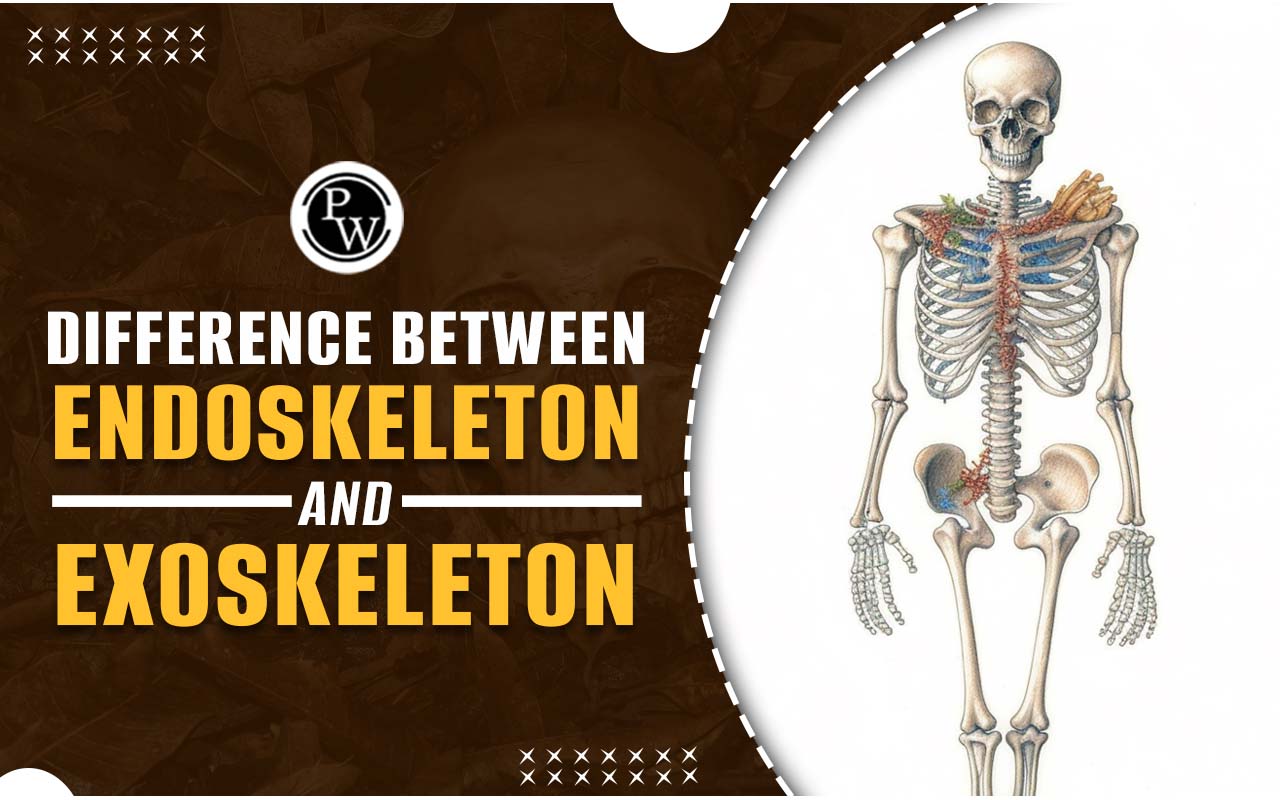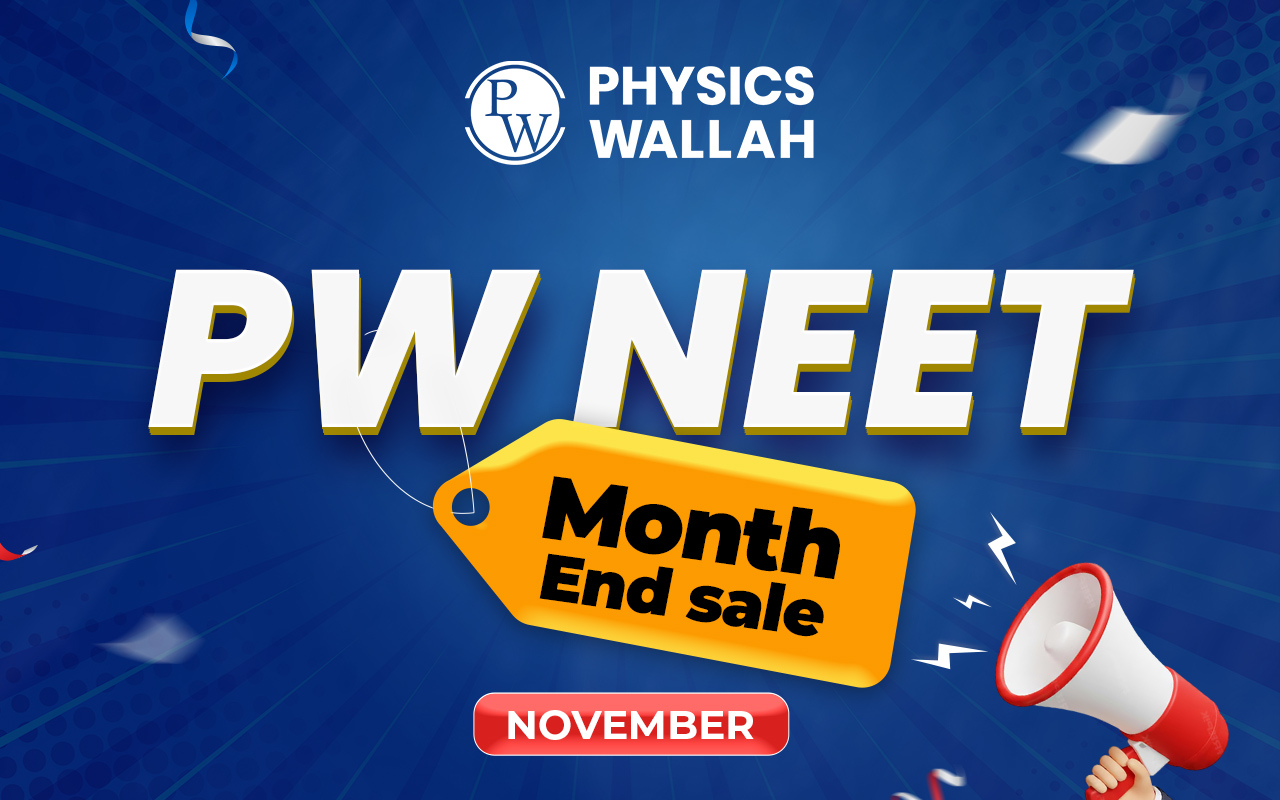

Difference Between Endoskeleton and Exoskeleton: Skeletons are present in all living organisms, but they can be classified into two types: endoskeletons and exoskeletons. Invertebrates have endoskeletons, whereas arthropods have exoskeletons. These two types of skeletons differ in terms of location, flexibility, growth, support, and blood supply. Endoskeleton and exoskeleton are two types of skeletons that both contain bones and cartilage. They differ, however, in terms of body positioning and roles.
| NEET Biology Syllabus | NEET Biology Diagrams |
| NEET Biology MCQ | NEET Biology Chapter wise Weightage |
| NEET Biology Notes | NEET Previous Year Question papers |
Endoskeleton is an internal structure that supports the body and protects most organs from damage. The endoskeleton is commonly found in the arms and legs' skull, ribs, spine, and muscles. On the other hand, the exoskeleton is an external framework that supports the body while acting as a protective layer. The term "exo" denotes its external nature. The following article delves into the difference between endoskeletons and exoskeletons in detail.
Difference Between Endoskeleton and Exoskeleton Overview
Skeleton provides structural support to animals, facilitates body movements, and protects internal organs. The endoskeleton and exoskeleton differ fundamentally in their locations: the endoskeleton is the hard structure within the body, whereas the exoskeleton is the tough exterior that surrounds the body. Endoskeletons are internal skeletons that offer support from within. They can be further classified into three types: Axial (including the head, spinal column, and ribs), Appendicular (including joints, muscles, and limbs), and Muscular. Endoskeletons serve a variety of functions in the human body, including framing the body, protecting vital organs like the heart and lungs, supporting muscles, facilitating fluid distribution, and maintaining bone strength. In contrast, the exoskeleton serves as an external shield, protecting the body from environmental influences. Exoskeletons, like endoskeletons, are classified into three types: epidermal, integumentary, and lamellar. All exoskeletons act as external protective layers, protecting the body from outside threats. The primary roles of the exoskeleton include providing structural support and protective functions, as well as enabling specific movements, such as the flapping of a bird's wings or bipedal locomotion.Difference Between Endoskeleton and Exoskeleton
The skeleton provides support and protection to all animals, vertebrates and invertebrates alike. Vertebrates rely on the endoskeleton for support and protection, whereas invertebrates rely on the exoskeleton. Genetically, the skeleton acts as a protective and supportive framework for an animal's body. The skeleton is classified into two types based on its location in the body: endoskeleton and exoskeleton. The following table describes the difference between the endoskeleton and the exoskeleton.| Difference Between Endoskeleton and Exoskeleton | ||
|---|---|---|
| Characteristics | Endoskeleton | Exoskeleton |
| Definition | Internal skeletal framework supporting the body and safeguarding internal organs | External rigid covering providing support and protection to the body |
| Composition | Bones or cartilage joined by joints and ligaments | Strong polysaccharide known as chitin |
| Range of Motion | Greater | Limited |
| Examples | Vertebrates (including humans), echinoderms, cephalopods | Arthropods (insects, crustaceans, arachnids), some mollusks (snails, clams) |
| Provides Support | Yes | Yes |
| Location | Internal | External |
| Enables Movements | Yes | Yes |
| Protects Organs | Yes | Yes |
| Energy Requirement | High energy requirement for maintenance and repair | Minimal energy required |
| Growth and Development | Grows with organisms | Shedding for growth |
| Vulnerability | Susceptible to injury and disease | Damage and deformation possible under physical stress if exposed |
| Adaptability | Capable of repairing and regenerating damaged bones and tissues | Maintains structural integrity even under high physical stress through specialized molting process |
Endoskeleton
An internal skeletal structure, such as the bone or cartilaginous framework found in vertebrates, is located within a living organism. An endoskeleton, or internal skeleton, is found in all vertebrates, including birds, fish, reptiles, amphibians, and mammals. The endoskeleton functions as an internal framework, providing structural support, protection, and support to internal organs while also assisting with movement and locomotion. It also provides attachment sites for muscles, allowing forces to be transmitted to them more easily. The endoskeleton is primarily made up of bones and cartilage, with some organisms, such as cartilaginous fish, having a skeletal structure made entirely of cartilage. Osteoblasts, which are responsible for the formation of joints that allow bones to articulate, form bones. Ligaments connect one bone to another, whereas tendons connect muscles and bones.- The primary function of the endoskeleton is to protect and support the body.
- The axial skeleton, consisting of the skull, rib cage, and vertebral column, shields delicate organs like the heart, liver, kidneys, and lungs.
- The appendicular skeleton, comprising the legs, feet, arm bones, pelvic girdle, and shoulder blades, supports and safeguards the limbs.
- Allows for increased flexibility and range of motion.
- Facilitates the development of larger body sizes.
- Capable of bearing greater weight compared to an exoskeleton.
- Can regenerate and repair damaged tissues and bones.
- Requires energy for maintenance and repair.
- Susceptible to illness and injury.
- May occasionally impede growth and mobility.
Exoskeleton
Exoskeleton refers to the outer skeletal structure, such as the chitinous exoskeleton found in arthropods. Various arthropods, including insects, crustaceans, arachnids, Chilopoda, and Diplopoda, possess an exoskeleton, which provides both bodily support and internal organ protection. In insects, the wings are connected to the exoskeleton via muscles. However, unlike internal skeletons, exoskeletons do not grow proportionally with the body; instead, they are shed multiple times throughout an arthropod's life cycle in a process known as molting.- The tissues comprising the exoskeleton contribute to its strength and rigidity.
- It serves as a defense mechanism against attacks from predators, safeguarding the organism's delicate organs.
- Chitin, a key component of an insect's exoskeleton, plays a crucial role in protecting them from predators.
- Provides excellent defense against predators and environmental hazards.
- Capable of supporting heavy loads relative to the animal's size.
- Maintains structural integrity even under considerable physical stress.
- Offers waterproofing and resistance to desiccation.
- Limits growth and mobility because the animal must shed its old exoskeleton to accommodate new growth.
- Depending on the creature's size, this may increase weight or bulk.
- Limits gas exchange and necessitates specialized respiratory structures.
- Extreme physical stress can cause damage and deformation.
Difference Between Endoskeleton and Exoskeleton FAQs
How does the exoskeleton of a frog differ from its endoskeleton?
Can you provide examples of organisms with both endoskeletons and exoskeletons?
Is a bird's skeleton classified as endoskeleton or exoskeleton?
Which skeletal type is more beneficial, exoskeletons or endoskeletons?
Do humans have exoskeletons?












